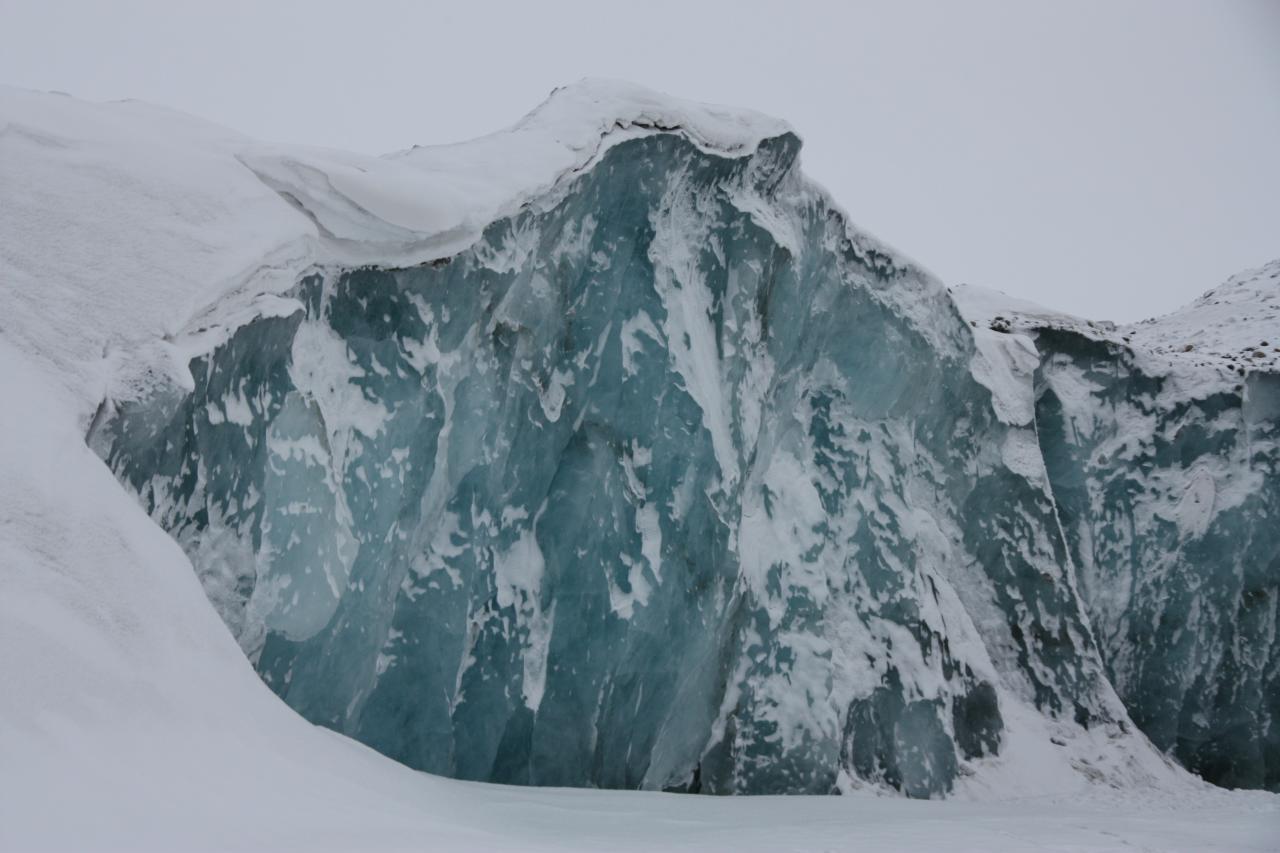For a while, we’ve heard scientists talking about the ice caps and glaciers melting. All of us know, and some of us, unfortunately, have to experience firsthand what that means. Islands are disappearing, and cities like Miami are flooding. These are some of the most visible signs of climate crisis, but a new study published last Monday in Nature is showing the alarming progress in areas we rarely glimpse: the Arctic.
Permafrost is ground that has remained frozen (under 0°C) for two or more years. 24% of the Northern Hemisphere is covered in permafrost. According to the NRDC, countries with significant permafrost regions include Siberia, Canada, Greenland, and Alaska. Permafrost, historically, is a carbon trapper. Over time the layers of ice trapped deceased animals and plant matter, as they decayed the animal and plant matter turned into carbon. Since each layer froze before the carbon was released into the atmosphere, the ice acted as a carbon sink. According to the scientists from the NSIDC, there are 1,400 gigatons of carbon frozen in the permafrost today. Our current atmosphere only has 850 gigatons of carbon in comparison.

Last Monday, lead researcher and author Sue Natali published a study revealing an unprecedented release of carbon from the Arctic permafrost. In the past, when the permafrost thawed enough to release any carbon, the vegetation that grew in the summer months was able to use it and convert it back to oxygen. However, with the rate of our carbon emissions throughout the year, the permafrost is thawing much more every year, releasing more carbon than usual. It is predicted that if our carbon emissions continue at the current rate, then the amount of carbon released by the permafrost each winter could increase by 41% by the end of the century. A second analysis was done with the assumption of each participating country meeting the promises signed in the Paris Agreement, a 17% rise was still predicted.
Natali states, “winter CO2 loss may already be offsetting growing season carbon uptake, and these losses will increase as the climate continues to warm.” Natali’s team is anticipating a 1.7 gigaton release of carbon from the permafrost each winter season. The vegetation in the Arctic can only absorb one gigaton of carbon during the growing season. Unfortunately, carbon is not the only trapped substance that is being emitted from the thawing permafrost. Acid, unknown viruses and infectious microbes are also safely trapped in the ice. Melting permafrost and Arctic sea ice devastates wildlife, including polar bears, walruses, arctic foxes, snowy owls, reindeer, muskoxen, and many others. Only time will tell what the release of these potentially deadly substances will mean for our planet.
And the rate in which permafrost is melting is truly frightening. A study released in June shows that the Arctic is thawing 70 years earlier than scientists were predicting, melting the permafrost that had been there for thousands of years.
These disasters around the world have everything to do with human consumption, from how we commute, to how we build and live inside houses, how we eat, and even to how we dress. Now, more than ever, it is vital that we all do our best in our daily lives to prevent the detrimental changes from further damaging our planet. Together, we can make a difference. We are the last generation that can.
Also by Iga: How Climate Change Is Affecting Your Fertility
Related: New Science Study Says Vegan Diet Reduces Carbon Footprint By 73%
Get more like this—Subscribe to our daily inspirational newsletter for exclusive content!
__
Photo: Permafrost, Bernard Polet via Flickr; Ice cap, Francesco Muratori via Flickr




